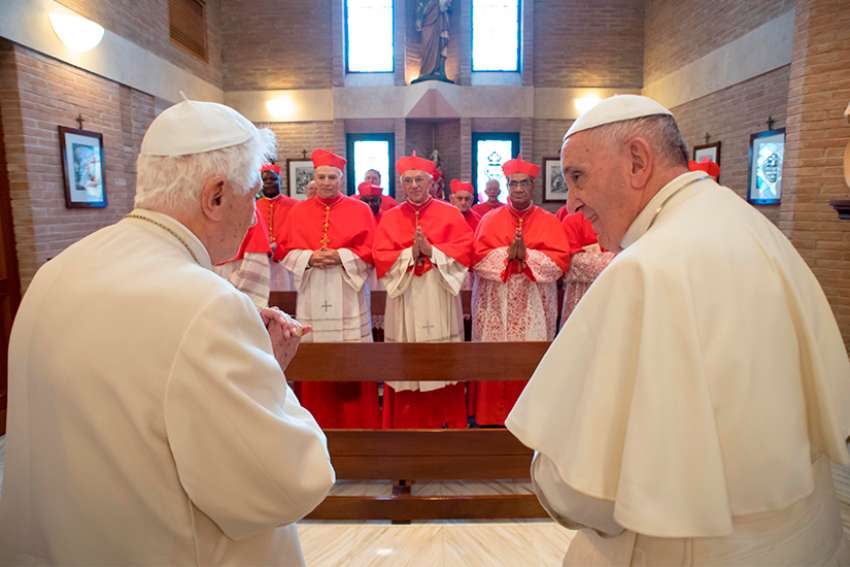He has disproved all those — and there were many — who suggested that having two popes was impracticable and probably unworkable, particularly for two men as different as the traditionalist Benedict and the progressive Francis. But they have shown that, although it may be unorthodox, it’s not dysfunctional to have a retired pope and an active pope living just a short walk away from each other across the Vatican Gardens. The way this has played out provides an interesting model for the future.
That was far from clear on Feb. 28, 2013, when Benedict, citing his age (85) and diminishing energy, became the first pontiff in almost 600 years to resign. It was a bold and courageous decision, but it raised legitimate questions about a shadow pope possibly second-guessing his successor, about rival camps developing and about the potential for this untested arrangement to cause instability and division. There were suggestions that Benedict should leave Rome entirely and return to his native Germany.
Instead, Benedict and Francis became neighbours. The Vatican said Benedict would hold the title of Emeritus Pope, be called Your Holiness and wear a papal white cassock. In other words, he would be accorded the dignity and respect appropriate for a successor of Peter and worthy of someone who had devoted his life to the Church. For his part, Benedict pledged “unconditional obedience” to Francis and declared his intent to live a life of prayer “hidden from the world.”
It is apparent, at the fifth anniversary of his shocking retirement, that the arrangement has worked as Benedict envisioned. With the exception of some bleating by a few naysayers, there has been zero confusion about Francis being the rightful pope. By all accounts, the two men have a warm relationship. Francis has called Benedict “the man who protects my shoulders and back with prayer” and occasionally welcomes him at public events. But Benedict has mostly lived quietly and behaved every bit like a man glad to be retired to his books.
For centuries, it was assumed that a Pope was elected for life. Benedict broke that mould and, lo and behold, St. Peter’s is still standing. He set a precedent that is bound to alter the papacy.
In a recent letter to an Italian newspaper, Benedict called this last stage of his life, as his strength diminishes, “a pilgrimage toward Home.” He deserves our prayers on his final journey.


